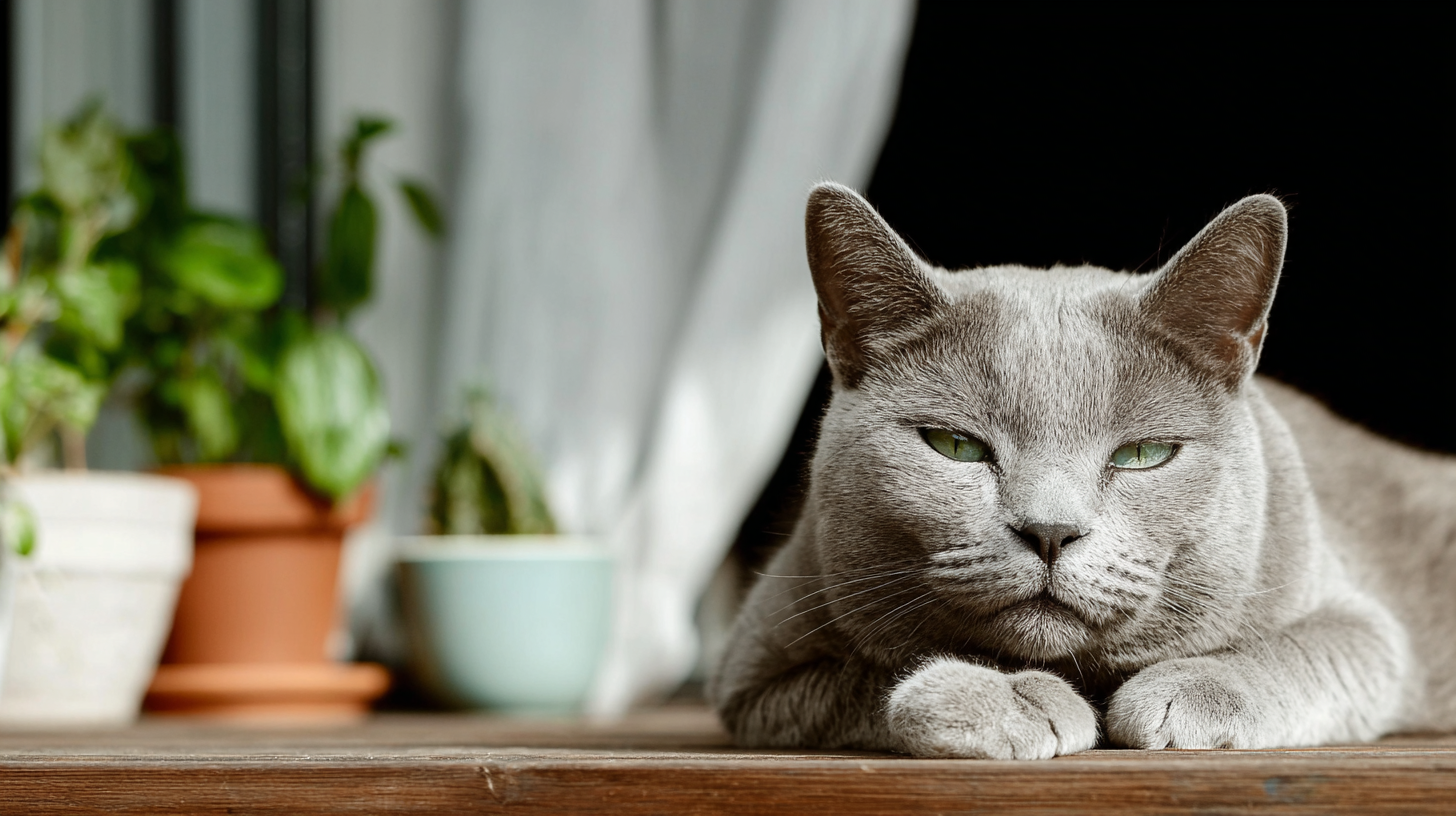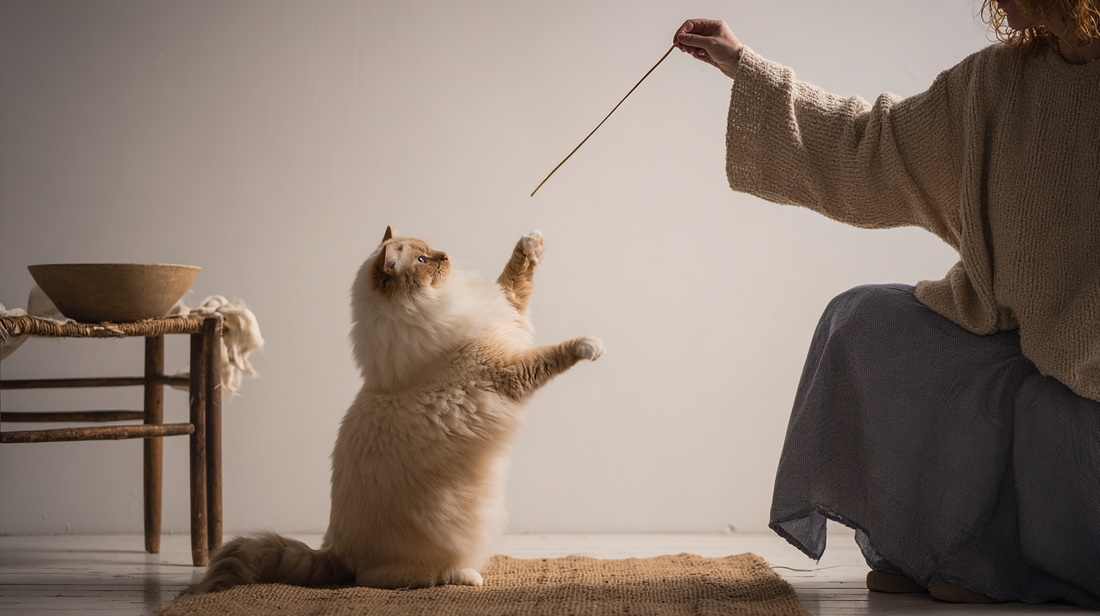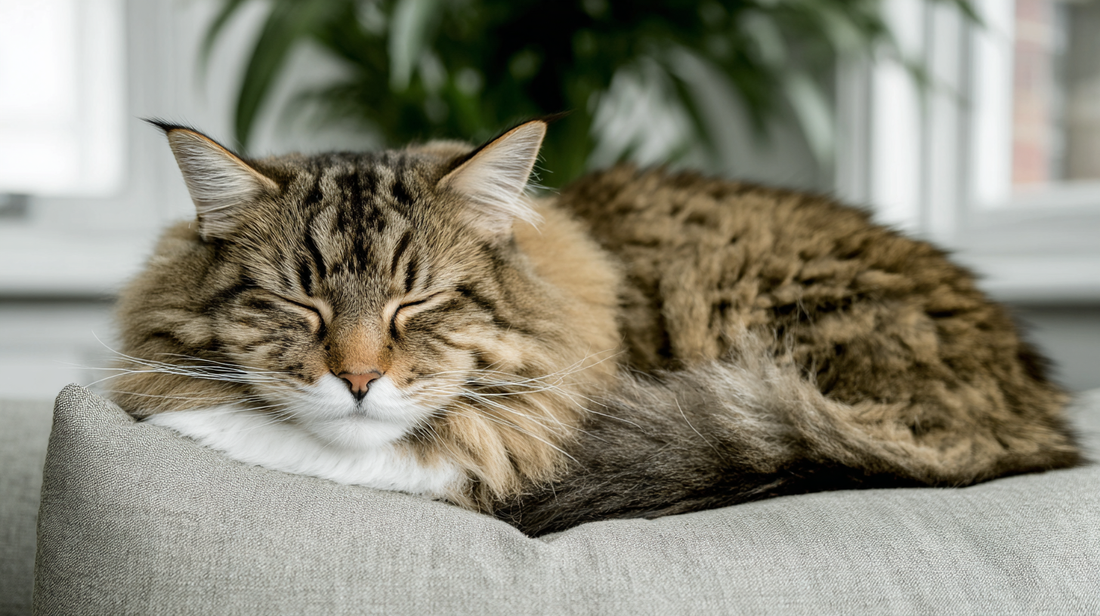As a veterinarian passionate about animal health and clear communication, I often tell pet owners that you are one of the most powerful tools in your pet's healthcare journey. You know your feline companion better than anyone else, carefully noticing those subtle shifts in their behavior and daily habits. Sometimes, these changes whisper to you that something isn't quite right with your beloved cat. One such whisper is drooling—and if you find yourself wondering "why is my cat drooling," your instincts are guiding you correctly.
While a little drool when your cat eagerly anticipates their favorite treat might seem charming, persistent or excessive drooling, known medically as hypersalivation, often signals an underlying health concern. Understanding what your cat's drool is actually telling you becomes your first crucial step toward ensuring their continued well-being and comfort.
Summary
Normal vs. abnormal drooling patterns
Harmless drooling behaviors
Before we explore the potential causes together, it's essential that you understand how to differentiate between normal, harmless drooling and signs that warrant your immediate attention. Some cats will drool slightly when they're extremely happy and purring contentedly, or when they're highly focused on an upcoming meal. This type of drooling typically appears minimal and sporadic, clearly tied to positive emotional states or happy anticipation.
Warning signs to watch for
However, when you notice drooling that appears excessive, consistent, new in onset, carries a foul odor, or comes accompanied by other unusual signs, it's time for you to pay much closer attention. These accompanying signs might include your cat having difficulty eating, pawing at their mouth, experiencing weight loss, showing changes in their drinking habits, displaying lethargy, or demonstrating reluctance when you try to touch them around the head.
This hypersalivation serves as a symptom suggesting that your cat's body is actively trying to communicate something important to you.

Why is my cat drooling? Dental and oral health problems
More often than not, excessive drooling in your cat originates directly from their mouth. Oral and dental diseases are incredibly common in our feline friends, with periodontal disease—inflammation of the tissues surrounding the teeth—standing as one of the most prevalent disorders I observe in my veterinary practice.
This condition begins with plaque, a sticky bacterial film that gradually hardens into tartar on your cat's teeth. Over time, this buildup leads to painful gum inflammation (gingivitis) and can progress to destroy the bone and soft tissues that support your cat's teeth.
Tooth resorption disorders
Tooth resorption represents another painful condition I frequently encounter in cats. This mysterious process involves parts of your cat's tooth, often starting from the root, being gradually "resorbed" by their own body's cellular activity. These lesions can cause incredible pain for your cat, exposing sensitive tooth areas and leading to discomfort that you might observe as drooling, reluctance to eat, or noticeable changes in their chewing habits.
Severe mouth inflammation
Stomatitis, also known as gingivostomatitis, can prove absolutely agonizing for your cat . This condition involves widespread, severe inflammation of soft tissues throughout your cat's entire mouth, including their gums, inner cheeks, and the back of their mouth near the throat.
When your cat develops stomatitis, you'll often observe profoundly red and swollen tissues that may also appear ulcerated or bleeding. Clinical signs that you should watch for include excessive drooling, bad breath, pawing at the mouth, a noticeable decrease in appetite, and progressive weight loss.

Additional oral concerns
Other oral issues that can cause drooling in your cat include fractured teeth—which expose sensitive nerves and cause significant pain—and less common but often more serious conditions like oral masses or cancers.
Professional dental examination requirements
Properly diagnosing these conditions requires a comprehensive professional dental assessment performed under general anesthesia. A thorough evaluation involves visual inspection, carefully probing the gum line around each of your cat's teeth, and taking full-mouth intraoral radiographs (X-rays) to reveal what's happening beneath the gum line and inside the teeth.
Your cat simply won't tolerate such a detailed and potentially uncomfortable examination while awake. Under anesthesia, any abnormalities—from facial asymmetries to enlarged lymph nodes—are carefully recorded on a dental chart, allowing your veterinary team to create the most accurate treatment plan for your cat's specific needs.
Health conditions affecting the whole body
Digestive system problems
Nausea or gastrointestinal upset commonly causes drooling that's completely unrelated to oral issues. Just like you might experience, your cat can feel queasy, and this uncomfortable sensation often leads to increased salivation.
When your cat experiences nausea, you may also notice decreased appetite or episodes of vomiting. Conditions such as inflammatory bowel disease, pancreatitis, or the ingestion of a foreign body can trigger nausea and the subsequent drooling you observe.

Kidney function decline
Kidney disease represents another significant systemic cause of drooling in your cat. When your cat's kidneys aren't functioning properly, waste products and toxins begin accumulating in their bloodstream— a dangerous condition called uremia.
This toxic buildup causes gastrointestinal signs like nausea, vomiting, and reduced appetite that you'll likely notice. Additionally, uremia affects your cat's sense of taste and smell, making their food seem unappealing and contributing to the drooling behavior. Early diagnosis and careful nutritional management become critical for cats with chronic kidney disease.
Emotional and pain responses
Drooling can also indicate general pain or discomfort in your cat, even when that pain isn't originating from their mouth. Your cat is naturally a master at hiding pain, and excessive drooling could represent one of the few indicators that they're hurting somewhere in their body.
Stress and anxiety can trigger various physiological responses in your cat, including hypersalivation. If your cat drools excessively only during car rides to the veterinarian or when you expose them to unfamiliar situations, this might represent a stress response. For some cats, the veterinary clinic environment itself can become a significant source of stress, with overwhelming smells and sounds leading to anxiety-induced drooling.

Toxic exposure risks
Finally, though less common, the ingestion of toxic substances or certain medications can cause drooling in your cat. If you suspect your cat has ingested something poisonous, you need immediate veterinary attention.
Partnering with your veterinary team
Acting quickly on concerning signs
When you observe your cat drooling, especially if it appears persistent or unusual, this serves as a clear signal that you should consult your veterinarian promptly. I always advise pet owners not to wait for other symptoms to worsen before seeking help. Early diagnosis and intervention can make a significant difference in treatment outcomes, particularly for dental diseases, which become much more complex and painful when left untreated.
Communicating effectively during appointments
When you discuss your concerns with your veterinarian, remember that you serve as a vital partner in your cat's healthcare team. You should feel comfortable being completely open about all the symptoms you've noticed, even those that seem minor or unrelated to the drooling. Your veterinarian has been trained to connect these seemingly separate dots and genuinely wants to collaborate with you to find the best solutions for your cat.
Don't hesitate to ask questions about medical terms that aren't clear to you, various treatment options, or the estimated costs involved. A good veterinary team will always take the time to explain everything in language you can understand, empowering you to make truly informed decisions about your cat's health.
The special bond you share with your cat is incredibly precious, and proactive veterinary care, supported by open and honest communication, ensures that this bond remains strong and healthy for many years to come. So when you notice that tell-tale drool, take it seriously and reach out to your veterinary team—we're here to help you give your feline friend the best possible care they deserve.
The information in this article is based on the following scientific publications:
- Elliott, J., & Grauer, G. (Eds.). (2006-2007). BSAVA Manual of Canine and Feline Nephrology and Urology (2nd ed.). BSAVA Publications.
- Villiers, E., & Blackwood, L. (Eds.). (2005). BSAVA Manual of Canine and Feline Clinical Pathology (2nd ed.). BSAVA Publications, Gloucester
- Horwitz, D. F., & Mills, D. S. (Eds.). (2009). BSAVA Manual of Canine and Feline Behavioural Medicine (2nd ed.). BSAVA Publications, Gloucester
- Harvey, A., & Tasker, S. (Eds.). BSAVA Manual of Feline Practice: A Foundation Manual. BSAVA Publications
- Rendle, M., & Hinde-Megarity, J. (Eds.). (2022). BSAVA Manual of Practical Veterinary Welfare (1st ed.). BSAVA Publications.
Looking for a solution? Start here
Stylla Hydration for cats
Supports optimal hydration with amino acid-based formulation
- Encourages drinking with amino acid flavour enhancers
- Supports urinary health through increased water intake
- Promotes kidney function with specialised ingredients
Made in Switzerland with strict quality standards





